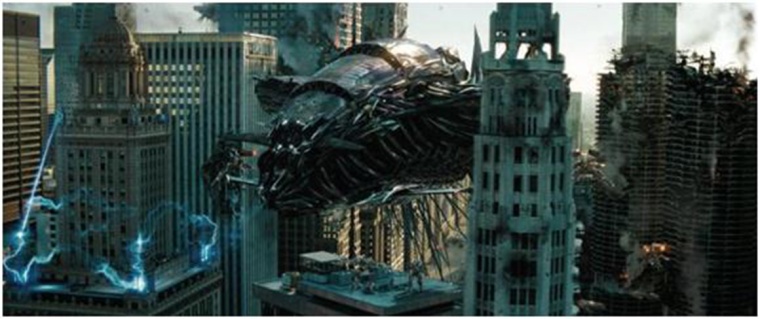These essays by Eric D. Wanger were originally published in a newsletter for the financial clients of the multifamily office he ran in Chicago. There has been yet another Transformers movie made since 2011, and three more are planned. When is the next debt ceiling crisis? Hard to say.
June 1, 2011
On Raising the Debt Ceiling
There’s not much to say about the debt ceiling fiasco that hasn’t been said. I’m glad the circus is over. Were we seriously considering telling our creditors we were going to stiff them because we just realized our spending is out of control? Maybe the next time Congress wants to debate a budget, it’ll actually debate a budget!
| President | Number of Debt Ceiling Increases | Total % Increase In the Debt Ceiling |
| Kennedy | 4 | 5% |
| Johnson | 7 | 5% |
|
Nixon |
9 | 36% |
|
Ford |
5 | 41% |
| Carter | 9 | 59% |
| Reagan | 18 | 199% |
|
Bush I |
9 | 48% |
|
Clinton |
4 | 44% |
|
Bush II |
7 | 90% |
|
Obama |
3 | 26% |
Source: http://progressivetoo.com.
Dylan Matthews, a Washington Post blogger, points out that the very concept of a federal debt ceiling has been controversial since it was first legislated in 1917. Apparently, it has caused trouble before. In 1957, the Air Force had to stop paying its bills because of the debt ceiling. Matthews quotes a Brookings Institution study that suggests this spending freeze led to a sudden $8 billion (1.7% of GDP) fall in defense spending, which contributed to the 1957-58 recession. (Source: www.washingtonpost.com/blogs/ezra-klein/post/past-research-on-the-debt-ceiling/2011/07/11/gIQAV8U6YI_blog.html.)
Members of Congress Work Into the Night to Help Restore U.S. Financial Credibility
I’m in favor of big spending cuts. I just want to see a budget debate, not a public display of economic ignorance and financial irresponsibility. Our present and future creditors would love it if Congress could produce any budget, especially a vigorously negotiated one. Likewise, I’m sure the world would be thrilled if the U.S. could simplify and rationalize its Byzantine (and pork-riddled) tax code.
I agree with both Ben Bernanke and Standard & Poor’s: the only loser in this fight was U.S. financial credibility. If you weren’t sure that our legislators would put partisan politics ahead of good fiscal governance, you are now. Gentlemen, we’re now being chastised by communists on fiscal responsibility!
Evil Robots From Space: In 3D
I just took our Chicago office to see the greatest movie in the history of the world. And by that I mean, of course, Transformers 3: Dark of the Moon. Dark side? Nope, just Dark, no Side. Anyway, the last 45 minutes of the movie show our office building at 401 N. Michigan Ave. and our entire north-of-the-river Michigan Avenue neighborhood being attacked, crushed, killed and destroyed by giant killer robots, giant evil robotic dirigibles, giant fanged killer worm-snake robots, giant multi-colored robot lasers, and giant robotic aerial drone things.
We watched the movie being filmed last summer. It was great seeing our entire neighborhood turned into a post-apocalyptic, robot-trashed, pyrotechnically enhanced wasteland. (And, given that we aren’t paying our interns squat, taking them out for bowling, pizza and a movie was a cheap way to thank them for a summer of hard work.)
3D movies, as it turns out, represent an investable theme as a sub-sector of the entertainment industry. IMAX Corp. (NYSE: IMAX), RealD (NYSE: RLD), Dolby Laboratories, Inc. (NYSE: DLB) and others were, until recently, trading at astronomical valuations, fueled by investment banker and investor-relations hype. Valuations are now more reasonable. We like IMAX the most. It is in the business of delivering super-large-scale movies and equipment, including, but not limited to, 3D films. It has a global backlog (nearly 100 facilities) in bringing new theaters online and does not depend wholly on a rapid U.S. recovery to fuel growth.
As a research team, we are not totally convinced that 3D is a set of products rather than a set of features. Can 3D capabilities be the sole business of a public company? We’re not sure. RLD is just such an example. It made inroads into the U.S. theatrical 3D movie market. It seemed to capture AMC, Cinemark and Regal, three of the biggest domestic operators. However, we agree with analysts like Richard Greenfield of BTIG, who wrote that major U.S. exhibitors are paying far more for 3D technology than they should (Greenfield had a SELL rating on RLD at the time of this writing). Overseas, competition is building in the 3D technology sector with MasterImage, Dolby, XPAND and IMAX all trying to grow.
3D effects are cool and here to stay. But in competitive industries, clever new features are not always enough to give new players the ability to survive. Remember American Call Waiting Corp.? We don’t either.
Regardless of the investment implications, we had a blast experiencing the thrill of a squadron of U.S. Air Force Boeing Ospreys flying in low to engage the killer robot air force over Navy Pier. Imagine!
Alan Turing, the father of computer science, would be proud of the dialogue. Never in the history of cinema have the robots gotten all the good lines, turning the human race into a bunch of meat-bag straight men. John Malkovich, John Turturro, Frances McDormand, Leonard Nimoy and even the real Buzz Aldrin joined in the fun.
There’s no shortage of fear, anger and uncertainty out there, so we figured it was OK to have some fun. While the markets are unlikely again to evoke the despair of 2008, it would be naive to expect decades of financial sinning to end in a one-dip hangover. It’s time we get our house in order. Even then, it will take us more years to put our economy on a sound footing. But I digress….
As I said, Transformers 3: Dark of the Moon was the greatest movie in the history of the world.
Eric D. Wanger, JD, CFA


